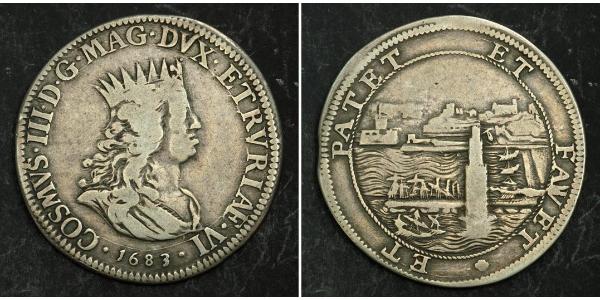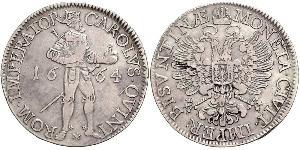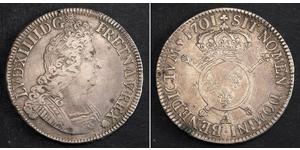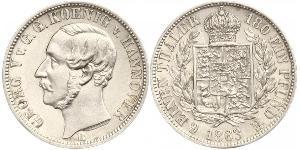(продана за $310.0)
1683, Livorno (Tuscany), Cosimo III de' Medici. Silver Tallero (Piastre) Coin. R!
Mint Year: 1683
Mint Place: Livorno
Ruler: Cosimo III de' Medici
Denomination: Tallero (Piastre)
State: Livorno (province of Tuscany)
Reference: Davenport 4215, KM-16.4. R!
Condition: A few edge hits, otherwise about VF!
Weight: 26.44gm
Diameter: 44mm
Material: Silver
Obverse: Draped bust of Cosimo III de' Medici right. Date (1683) below, flanked by pellets.
Legend: COSMVS . III . D . G . MAG . DVX . ETRVRIAE . VI . 1683 .
Reverse: Harbour view of Livorno with sailboats, lighthouse in foreground and city view in background.
Legend: * ET PATET ET FAVET
The Medici family, one of the leading families in Europe for over four hundred years, ends with Giovanni Gaston. He had no heirs and was unable to provide for his succession. Thus, in 1738, the Grand Duchy of Florence becomes attached to the House of Austria.
The Province of Livorno or Leghorn (Italian: Provincia di Livorno) is a province in the Tuscany region of Italy. It includes several islands of the Tuscan Archipelago, including Elba and Capraia. Its capital is the city of Livorno.
em>.
Cosimo III de' Medici (14 August 1642 – 31 October 1723) was the penultimate Grand Duke of Tuscany. He reigned from 1670 to 1723, and was the elder son of Grand Duke Ferdinando II. Cosimo's 53-year long reign, the longest in Tuscan history, was marked by a series of ultra-reactionary laws which regulated prostitution and banned May celebrations. His reign also witnessed Tuscany's deterioration to previously unknown economic lows. He was succeeded by his elder surviving son, Gian Gastone, when he died, in 1723.
He married Marguerite Louise d'Orléans, a cousin of Louis XIV. It was a marriage fraught with tribulation. Marguerite Louise eventually abandoned Tuscany for the Convent of Montmartre. Together, they had 3 children: Ferdinando in 1663, Anna Maria Luisa, Electress Palatine, in 1667, and Gian Gastone, the last Medicean ruler of Tuscany, in 1671.
In later life, he attempted to have Anna Maria Luisa recognised as the universal heiress of Tuscany, but Charles VI, Holy Roman Emperor, would not allow it because Florence was nominally an imperial fief, and he felt he alone could alter the Tuscan laws of succession. All Cosimo's efforts to salvage the plan floundered, and in 1737, upon his younger son's death, Tuscany passed to the House of Lorraine.

|
Добавив:
anonymous 2015-11-22 |






















